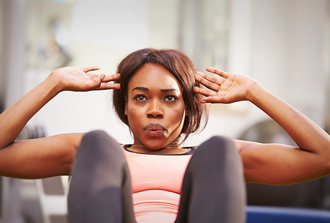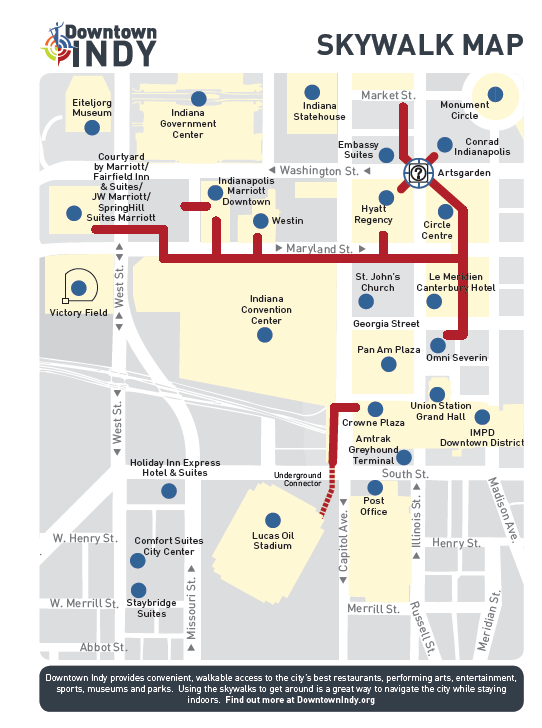Saturday, April 21, 2018, 9:00 AM.
Spring Saturday Hike Series at Eagle Creek Ornithology Center.
Each hike will be about 2-3 miles along the easy to moderate Eagle Creek Park trails. At least one week, the hike covers trails on the west side as well. Every Saturday in April and May at 9 AM. $3 per hike. Info: 317-327-2473.
Location: Eagle Creek Park, 6515 Delong Road, Indianapolis, Marion County.
facebook.com/Ornithology.Center/
Category Archives: Vary Activity
Shoulder Stability-Mobility Series

For shoulder strength and stability exercises, check out the link below. Included is an animated point-by-point instruction on tools to strengthen your neck and shoulders.
Beginner Biceps Workout

See the link below for access to variable levels for differing body workouts. This link accesses a beginning biceps stretch.
Bollywood – A New Kind of Workout
Guided Meditations & Mindfulness App
For those of you looking for some structure to your meditations and mindfulness exercises, you may find the “Stop, Breathe & Think” App helpful. The Application breaks down principles into small bites that you can perform in short periods. (over just several minutes). The guidance provided is succinct and helpful.

https://www.stopbreathethink.com
Create Your Own Circuit Training
https://healthyforgood.heart.org/move-more/infographics/create-a-circuit-home-workout

When the weather outside is frightful — or too rainy, hot or cold for an outdoor workout — you can create your own exercise circuits at home with absolutely no equipment needed. It can be a great way to stave off burnout and get a good workout.
According to the American Council on Exercise, a typical circuit training workout includes about 8-10 exercises. You alternate strength/resistance exercises focused on different muscle groups with brief cardio bursts of 30 seconds to 3 minutes. The beauty of the circuit is that you can be creative. Mix and match your favorite moves.
Here are some examples of exercises that can be included in a circuit, along with some basic safety tips.
Cardio Exercises
- Jumping jacks
- Jumping rope
- Jogging or marching in place
- Stair climbing or step-ups
Strengthening and Stability Exercises
- Plank and side plank
- Pushups
- Sit-ups or crunches
- Hip lift or bridge position
- Triceps dips on a chair
- Lunges
- Squats or chair position
- Wall sits
Safety Tips
- If you’re unsure about any of these exercises, talk with your healthcare professional or a certified fitness trainer.
- Choose exercises that are appropriate for your level of physical fitness and ability.
- Rest or stretch between exercises as needed.
- When starting an exercise program, begin slowly with low-intensity exercises.
- Wait at least 2 hours after eating a large meal before doing strenuous exercise.
- Wear appropriate shoes for your activity and comfortable, loose-fitting clothing that allows you to move freely but won’t catch on other objects.
- Warm up with low-intensity exercises at the beginning of each exercise session.
- Drink water before, during, and after your exercise session.
- Stop if you have pain or pressure in your chest, neck, shoulder, or arm or feel dizzy or sick to your stomach.
- Breathe regularly; exhale as you push or lift and inhale as you relax. Don’t hold your breath during strength exercises.
- Build up your time and number of repetitions slowly as your fitness improves.
Downtown Skywalk Map
FEELING THE NEED TO MOVE, BUT IT’S COLD OUTSIDE

https://www.hipmunk.com/tailwind/make-indianapolis-skywalks/
Enhancing Yoga Poses
 While yoga can help improve flexibility, posture and balance, the practice of yoga offers so much more, including self-reflection, the practice of kindness to ourselves and others, and continued growth and self-awareness. Of course, all of this is much easier to move toward if you can find a sense of comfort in the poses.
While yoga can help improve flexibility, posture and balance, the practice of yoga offers so much more, including self-reflection, the practice of kindness to ourselves and others, and continued growth and self-awareness. Of course, all of this is much easier to move toward if you can find a sense of comfort in the poses.
Yoga provides many props to enhance your ability to express a yoga pose. One of the most popular yoga props to use in class is the yoga block. Made from foam, bamboo, wood or cork, the block is often used as an extension of the arms, but can also support the back, head and hips to help the body settle into a pose. Furthermore, yoga blocks:
- Support range of motion, thereby shortening the distance between you and the floor (“bringing the floor closer to you”).
- Assist in establishing correct alignment.
- Help make yoga accessible to beginners and to those experiencing injury or other physical limitations.
- Bring awareness to properly engage and support muscles in a specific pose.
- Can be placed at the low, medium and high positions to accommodate more or less support.
Whether you are seated or standing, or have tight hips and shoulders, the following four poses provide excellent examples of using a yoga block to enhance flexibility and find greater enjoyment in your yoga practice. (see web address below for more info)
Getting Started – Tips for Long-term Exercise Success
Walking, swimming, cycling, jogging, skiing, aerobic dancing or any of dozens of other activities can help your heart. They all cause you to feel warm, perspire and breathe heavily without being out of breath and without feeling any burning sensation in your muscles.

Whether it is a structured exercise program or just part of your daily routine, all exercise adds up to a healthier heart. Take the first step by walking. It’s free, easy to do and when you have a walking companion, you’re more likely to stay motivated.
Here are some tips for exercise success:
Dress for success!
- Wear comfortable, properly fitted sneakers or flat shoes with laces.
- Wear comfortable, loose-fitting clothing appropriate for the weather and the activity.
Make the time!
- Start slowly. Gradually build up to at least 30 minutes of activity on most or all days of the week (or whatever your doctor recommends).
- Exercise at the same time of day so it becomes a regular part of your lifestyle. For example, you might walk every Monday, Wednesday, Friday, Saturday and Sunday from noon to 12:30 p.m.
- Find a convenient time and place to do activities. Try to make it a habit, but be flexible. If you miss an exercise opportunity, work activity into your day another way.
Keep reasonable expectations of yourself.
- If you have a high risk of coronary heart disease or some other chronic health problem, check with your healthcare provider before beginning a physical activity program.
- Look for chances to be more active during the day. Walk the mall before shopping, take the stairs instead of the escalator or take 10–15 minute breaks while watching TV or sitting for walking or some other activity.
- Don’t get discouraged if you stop for a while. Get started again gradually and work up to your old pace.
- Don’t exercise too vigorously right after meals, when it’s very hot or humid, or when you just don’t feel up to it.
Make it fun!
- Choose activities that are fun, not exhausting. Add variety. Develop a repertoire of several activities that you can enjoy. That way, exercise will never seem boring or routine.
- Ask family and friends to join you — you may be more likely to stick with it if you have company. Or join an exercise group, health club or community center. Many churches and senior centers offer exercise programs too. (Remember to get your doctor’s permission first.)
- Use variety to keep your interest up. Walk one day, swim the next, then go for a bike ride on the weekend.
- Use music or audio books to keep you entertained.
Track and celebrate your success!
- Note your activities on a calendar or in a logbook. Write down the distance or length of time of your activity and how you feel after each session.
- Keep a record of your activities. Reward yourself at special milestones with non-food items, like a small gift or shopping trip for yourself. Nothing motivates like success!
- Visit heart.org/physicalactivity to find all the resources you need to get moving and stay motivated.
Newest on Fitness Trackers
![]()
Fitness trackers are getting better and better at what they’re primarily designed to do: count your steps and measure your heart rate.
Most of the trackers we test now earn a top score in step counting, and models that measure heart rate are generally excellent at that, too. What’s more, the step-count feature now built into many smartwatches and smartphones also fared well, we found.
But beyond technical proficiency, will trackers help you reach the goals you have for using one? Things that, presumably, include being more active, losing weight, and feeling healthier.
For some people, the answer is yes, according to a nationally representative Consumer Reports survey of 1,007 U.S. adults—though the survey also makes it clear that you can’t expect miracles.
Instead, our survey suggests—and experts we spoke with agree—that you should view trackers as one tool in a comprehensive effort to be more active, lose weight, and improve your health.
For more information go to: https://www.consumerreports.org/fitness-trackers/precise-devices-fitness-trackers-are-more-accurate-than-ever/

